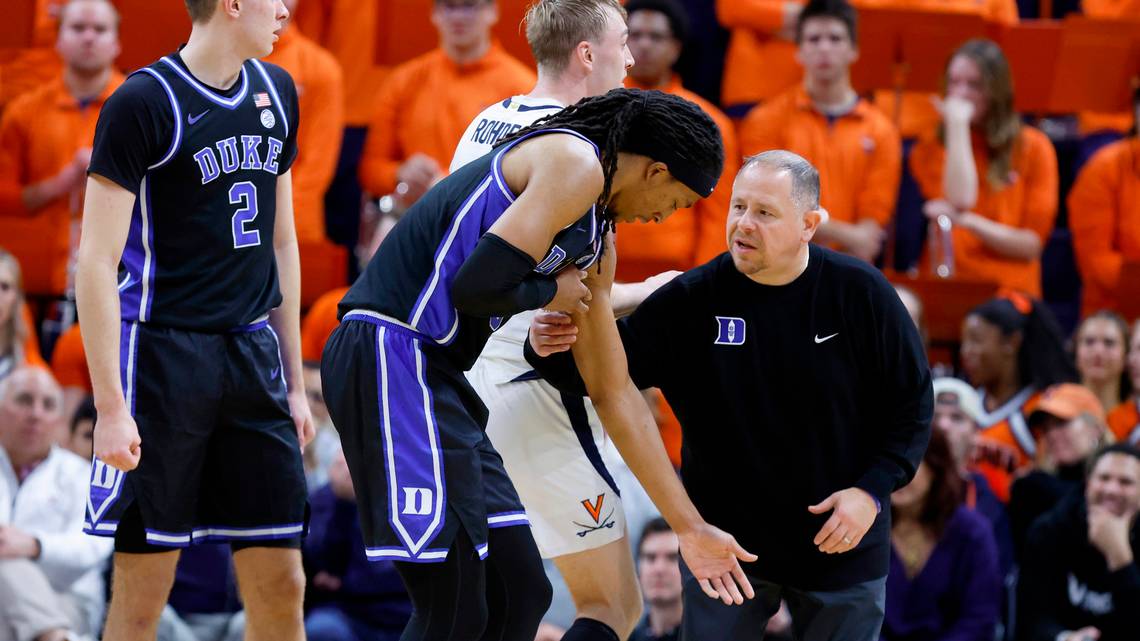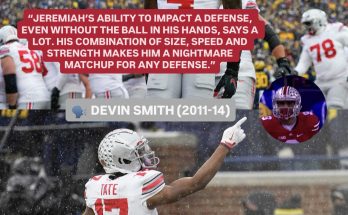Maliq Brown’s Injury: A Major Setback for Duke Basketball
Introduction
In a devastating turn of events for Duke basketball, key player Maliq Brown has suffered a severe injury that could potentially end his season and even jeopardize his playing career. The 6-foot-9 junior forward, known for his defensive prowess and versatility, sustained a dislocated left shoulder during a crucial matchup against the Virginia Cavaliers. This injury adds to a series of setbacks for Brown this season, raising concerns about his future on the court.
As Duke continues its quest for a strong finish in the NCAA season, Brown’s absence will leave a significant gap in the team’s defensive and offensive strategies. His recovery timeline remains uncertain, but the impact of his injury on the team and his career trajectory is profound.
How the Injury Happened
The incident occurred in the first half of Duke’s 80-62 victory over Virginia on February 17, 2025. Brown was engaged in an intense defensive play when he deflected a pass, landing awkwardly on his left shoulder. Immediately writhing in pain, he was taken off the court and later seen on the bench with his arm in a sling.
Head coach Jon Scheyer confirmed the injury in the post-game press conference, stating, “It’s just gonna take some time to see how he heals and recovers. We probably won’t know anything definitive this week. We’ll see about his status in the next week or so.” While this statement offers hope that Brown might return later in the season, it also acknowledges the severity of the injury and the uncertainty surrounding his recovery.
Brown’s Contributions to Duke
Maliq Brown transferred to Duke after two seasons at Syracuse, where he established himself as a defensive force. Since joining the Blue Devils, he has averaged 2.5 points, 4.1 rebounds, 1.6 assists, and 1.4 steals per game. His defensive capabilities and ability to guard multiple positions have made him a crucial asset for Duke’s game strategy.
One of Brown’s most remarkable statistics is his 76.9% success rate on two-point attempts, highlighting his efficiency around the rim. His ability to disrupt passing lanes and his high basketball IQ make him a player that Duke heavily relies on, especially in high-pressure situations. His absence will force the coaching staff to rework their defensive schemes and find a way to compensate for his impact on both ends of the court.
The Severity of Shoulder Dislocations in Basketball
Shoulder dislocations are particularly problematic for basketball players due to the repetitive overhead movements required in the game. The recovery process varies depending on the severity of the injury, the extent of ligament damage, and whether surgery is necessary.
In some cases, athletes return to play within a few weeks, but severe dislocations often require surgery and extended rehabilitation, sometimes up to six months. Given that Brown has already suffered a knee injury earlier this season, his overall health will be a factor in determining his ability to recover fully.
Previous Knee Injury and Its Impact on Brown’s Season
This shoulder injury is not Brown’s first setback this season. On January 11, during a game against Notre Dame, he suffered a right knee sprain after colliding with teammate Mason Gillis. That injury sidelined him for several weeks, forcing Duke to adjust their lineups and game strategy in his absence.
Coach Scheyer expressed concern at the time, stating, “He sprained his knee and he’ll miss an extended period of time here. Could be longer, but he’s going to be out for the next several games, minimum.” Brown’s absence was felt on the court, as his defensive presence was difficult to replace. The team managed to adapt, with players like Khaman Maluach and Patrick Ngongba II stepping up, but losing Brown again puts additional strain on the roster.
Duke’s Next Steps and Adjustments
Duke now faces the challenge of adjusting their game plan without one of their most versatile defenders. Brown’s absence will likely mean increased playing time for players such as Khaman Maluach, Patrick Ngongba II, and Mason Gillis. Coach Scheyer may also opt for smaller, faster lineups to maintain defensive intensity and compensate for Brown’s loss.
One of the biggest concerns moving forward is how Duke will handle high-profile matchups, including their upcoming game against Illinois at Madison Square Garden. The Blue Devils will need to rely on their depth and adaptability to remain competitive, particularly in the defensive aspect of the game.
Long-Term Implications for Brown
Beyond the immediate impact on the team, Brown’s injury raises concerns about his long-term playing career. Recurrent shoulder dislocations can become a chronic issue, potentially limiting his ability to perform at the highest level. If surgery is required, the recovery process could take several months, meaning he may not return until next season.
For a player with aspirations of making it to the professional level, sustaining multiple injuries in a single season is a major red flag for scouts and teams. Brown’s priority will be a full recovery, ensuring that he does not rush back and risk aggravating the injury further. Duke’s medical staff will need to carefully manage his rehabilitation to give him the best chance at a successful return.
Team Morale and Leadership Amidst Adversity
The loss of a key player like Brown is not only a physical setback but also a psychological one for the team. His leadership and presence on the court will be missed, and his teammates must step up to fill the void. Veterans like Jeremy Roach and Tyrese Proctor will need to lead by example, keeping the team motivated and focused on their goals.
Coach Scheyer has emphasized resilience throughout the season, and this challenge will test Duke’s ability to adapt and thrive despite adversity. While injuries are an unfortunate reality in sports, how a team responds to them often defines their season.
Maliq Brown’s injury is a significant blow to Duke’s basketball season. His defensive skillset and leadership are irreplaceable, and his absence will force the Blue Devils to make strategic adjustments in the coming weeks. The severity of his shoulder injury remains uncertain, but given his history of injuries this season, a cautious approach to recovery is necessary.
As Duke continues its campaign, the team must rally together to fill the void left by Brown. His recovery process will be closely monitored, and fans will be hoping for a swift and successful return. Whether or not Brown plays again this season, his resilience and determination will be crucial in shaping his future in basketball. In the meantime, Duke must find a way to adapt and remain a formidable force without one of their key players on the court.



